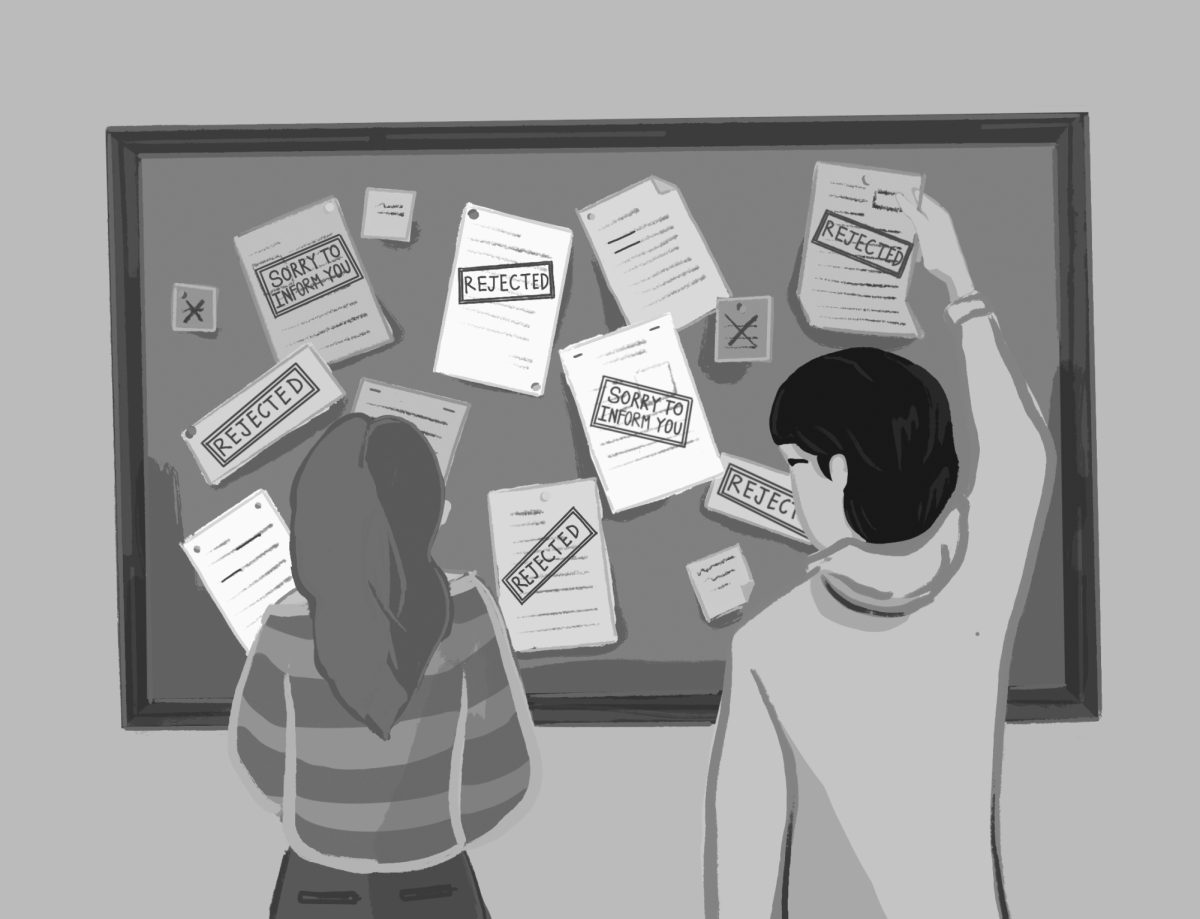After careful consideration of your application, we regret to inform you that we are unable to offer you a spot in our Class of 2029 because you’re not good enough. This year’s application pool was all better than you, and we hope that this decision will ruin your life.
To seniors, this subtext of a college rejection feels glaringly obvious. A rejection letter from your dream school does not simply feel like a denial for admission—it feels like a rejection of everything you’ve ever worked for and of who you are as a person.
The devastation of rejection has intensified with the rise of Early Decision (ED), a binding choice released within two months. More often than not at the highly selective institutions favored by many students at this school, you are faced with rejection from the school that you had already emotionally committed to. As much as the school tries to warn us that colleges often spend less than 10 minutes reading the application that you poured months into, many students harbor the idea that we will be the exception to the ever-declining acceptance rate.
This can be a devastating blow: after working towards a ‘dream school’ for years in an intense academic environment, those of us who get rejected feel as though we have fallen short, especially as it seems like the rest of our peers have succeeded. However, our community must learn how to embrace rejection as not only a fact of life, but as a truly important part of the college process that can shape us for the better.
30 years ago, rejection did not feel as much like the be all, end all at the school. Students pasted their rejections onto a wall in Chalmers and wrote lighthearted messages on each others’, a tradition that faded out many years ago when it became fodder for competition and mockery. Now, school traditions surrounding college admissions consist of posting a baby photo coupled with a college pennant on @hw2025collegecommits, or wearing your schools’ merch on Sweatshirt Day.
Early Decision pools are much smaller than Regular Decision pools, meaning students at the school often feel like they’re competing directly against each other. The yearly ‘ED spreadsheet’, tracking everyone’s applications and GPA, creates a space for students to constantly compare themselves to each other.
The school must actively work to combat the culture of obsession surrounding ED results. Although there is no perfect solution, there are some concrete ways we can begin to embrace the inevitable rejections alongside the acceptances. Students can spend the day after decisions come out mourning their rejections; then, the next day, the school should provide a space for catharsis so students can begin to move past these emotions. This doesn’t necessarily have to be a rejection wall; it could be something along the lines of a paper shredder on the Quad for students to shred their rejection letters, printed out. This allows for individual emotional release without creating a space for hatred or further competition.
College decisions should be taken as nothing more than what they are: a single decision. Maybe you’ll spend the next four years at that school, or maybe you’ll end up somewhere else. Maybe you’ll find out where you’re going in December, or maybe in April. As mid-December rolls around, we must keep in mind that a college decision is an opportunity either way—it either provides a direction or a redirection, both of which can fundamentally shape you for the better if you let them.


































